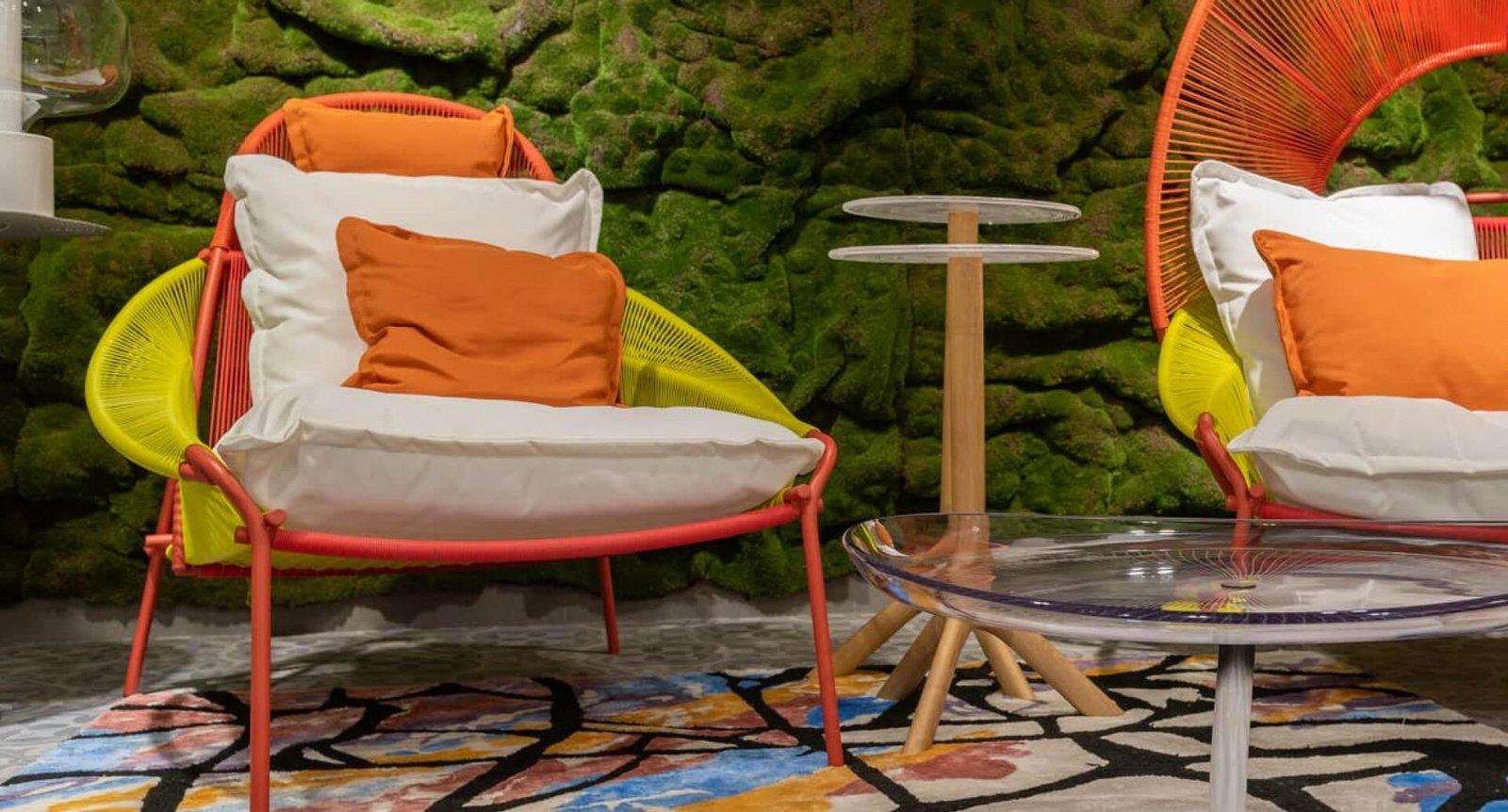Interior design is a dynamic field that marries aesthetics with functionality, requiring a delicate balance when curating spaces. For homeowners and aspiring designers alike, the journey often begins with a blank canvas. This scenario can evoke a mix of excitement and anxiety, making the search for design inspiration a crucial step in any renovation or redecorating project. The vast array of options available can sometimes lead to feelings of overwhelm, especially for those unfamiliar with the intricacies of styling a space.
The importance of design inspiration cannot be overstated; it serves as a guiding light throughout the creative process. Finding the right inspiration helps in defining the vision for a project, enabling individuals to navigate through various styles, colors, and layouts more confidently. Furthermore, inspiration can come from multiple sources, including nature, art, architecture, and even the unique characteristics of one’s home. By recognizing what resonates personally, homeowners can cultivate a space that not only reflects their tastes but also promotes comfort and functionality.
Moreover, many face challenges when attempting to visualize how different elements will come together in a cohesive manner. Design inspiration bridges the gap between an idea and its practical application, transforming abstract concepts into tangible designs. It encourages individuals to explore diverse aesthetics—whether leaning towards minimalism, modern chic, or rustic charm—and to experiment with unique combinations that express their style. Associative thinking, whereby one draws inspiration from seemingly unrelated sources, can also yield innovative and personalized interior solutions.
Ultimately, the pursuit of design inspiration is an essential element of the interior design process, offering a finite direction while unlocking the potential of one’s creative instincts. In the pages that follow, we will explore various resources and influential blogs that provide a wealth of inspiration and guidance for those embarking on their design journey.
Recap of the Previous Blog Post
The first installment of our series on the top interior design blogs of 2024 presented a curated selection of twelve influential resources that serve as a compass for anyone passionate about interior design. These blogs were chosen not only for their aesthetic appeal but also for their ability to inform and inspire readers in various aspects of design, from residential interiors to commercial spaces.
Among the highlighted blogs, we explored the unique perspectives presented by prominent designers, emerging talents, and established brands. Each blog offers its distinctive take on trends, techniques, and styles that resonate with an audience seeking knowledge and stimulation in the world of interior design. For instance, some featured bloggers delve into minimalist design principles, while others provide comprehensive guides on incorporating sustainable practices into decor.
Moreover, the previous post emphasized the value of these blogs as a source of continuous learning. Whether readers are seasoned professionals or individuals undertaking personal projects, these blogs foster creativity and offer practical insights into executing a successful design. Utilizing vivid imagery and engaging writing, the selected blogs aim to connect with their audiences on a personal level, transforming a mere interest in interior design into an enriching experience.
As we move forward into Part 2 of our blog series, we build upon this foundation, continuing to highlight additional outstanding blogs that further broaden our readers’ horizons. It is essential to recognize that each blog we discuss complements the previous selections, thereby enhancing the overall understanding of current design trends and best practices. This holistic approach ensures a well-rounded perspective, ultimately benefiting those who seek to elevate their design knowledge.
Criteria for Selecting Interior Design Blogs
When assessing the plethora of interior design blogs available in the digital landscape, several critical criteria serve as benchmarks for selection. These criteria ensure that the blogs featured not only provide valuable information but also engage and inspire their readers. The first aspect of evaluation is the quality of content. High-quality content is characterized by well-researched articles, insightful commentary, and accurate information that reflects current trends and practices in interior design. Blogs that consistently offer in-depth analysis and thoughtful perspectives are prioritized, as they command respect among both novice and seasoned designers.
User engagement is another crucial factor. Blogs that encourage interaction through comments, social media shares, and diverse multimedia presentations tend to foster a vibrant community. This engagement signifies that the blog resonates with its audience and encourages a collaborative spirit among readers. Additionally, the variety of styles represented within a blog is vital. An inclusive approach, showcasing various aesthetics—from minimalist to maximalist design—allows a broader audience to connect with the content. It’s essential that the selected blogs cater to diverse tastes and incorporate a range of design philosophies.
Practical tips are also a key component in evaluating interior design blogs. Those that provide actionable insights, DIY guides, and budget-friendly ideas are particularly appealing as they equip readers with tools to implement design changes in their own spaces. Furthermore, attention is given to how well these blogs cater to different skill levels. Including content that educates beginners while still providing advanced tips for experienced designers enhances the blog’s overall appeal. Lastly, blogs that consider various budget ranges demonstrate an understanding of the financial constraints many individuals face when pursuing interior design. This comprehensive selection criteria ensures a curated list of blogs that is both informative and accessible.
Diverse Design Styles to Explore
As we delve into the world of interior design, one of the most exciting aspects is the variety of styles available to explore. Each design style carries its unique characteristics that can greatly influence the ambiance of a space. From contemporary to traditional, minimalist to bohemian, and eclectic, these styles offer myriad ways to express personal taste and creativity.
Contemporary design is often characterized by its clean lines, open spaces, and an overall sense of simplicity. This style evolves as trends change, making it ever-relevant. Contemporary interiors typically utilize a neutral color palette with bold accents, allowing for creativity without overwhelming the senses. Materials such as glass and metal are frequently employed to create a sleek, modern aesthetic.
In contrast, traditional design draws inspiration from classic architecture and artwork. This style is rooted in elegance, often featuring rich wood tones, intricate moulding, and a color scheme grounded in warm hues. Furnishings in traditional interiors are typically ornate, showcasing craftsmanship and a certain level of historical significance, which can create an inviting and comforting atmosphere.
Minimalism, as a design style, champions the concept of “less is more.” It emphasizes simplicity and functionality, and spaces are often uncluttered. The use of monochromatic colors and hidden storage solutions contributes to a tranquil environment. This approach not only promotes ease of maintenance but also allows for a focus on essential elements in a home.
Bohemian design, on the other hand, celebrates a carefree and eclectic mix of patterns, textures, and colors. This style encourages personal expression and a sense of wanderlust, characterized by the use of vintage pieces, global textiles, and curated collections. The result is anunstructured, vibrant space that exudes individuality.
Lastly, the eclectic style merges various design elements and influences from different times and places, creating unique and captivating interiors. This approach invites homeowners to combine pieces that hold personal significance, thus making each space a true reflection of the individual.
Ultimately, regardless of the design style chosen, the key lies in finding what resonates personally. With the diverse array of styles available, there is a perfect match for everyone, making it easy to transform any space into a home.
Featured Interior Design Blogs – Part 2
As we continue our exploration of exceptional interior design blogs in 2024, we present twelve more notable entries that contribute valuable insights to the design community. These blogs are not only informative but also provide inspiration for a wide audience ranging from novice decorators to seasoned designers.
The first blog on our list is Decorist, which focuses on personalized interior design advice. They offer professional consultations and resources that cater to all design budgets, making expert style accessible.
Next, we have Emily Henderson, a freelance stylist known for her approachable design aesthetics. Her blog emphasizes the importance of layering textures and colors, appealing particularly to those who wish to create cozy, lived-in environments.
Apartment Therapy stands out for its emphasis on small-space living solutions. It aims to inspire readers to maximize their limited square footage effectively through clever design hacks and innovative storage solutions.
The Design*Sponge blog boasts a rich variety of topics including DIY projects and ethical design practices. This platform is particularly known for its community engagement, appealing to socially conscious designers.
Stylesweet delivers a unique spin on interior design by combining lifestyle and home aesthetics. The blog primarily targets young professionals and offers guidance on making stylish yet functional choices in urban settings.
AD100 serves as a definitive authority on the top interior designers worldwide, showcasing their latest projects and trend forecasts. Its audience mainly consists of design enthusiasts seeking high-end inspiration.
The House Beautiful blog provides the latest trends and expert advice in residential design. Its user-friendly layout and abundant images cater to homeowners looking to beautify their living spaces.
The Inspired Room focuses on helping readers create homes that reflect their individual personalities. The blog’s relatable tone and practical tips appeal to those seeking authenticity in their interiors.
Design Milk covers a broader range of design topics beyond interiors, including art, furniture, and architecture. It attracts a diverse audience of design aficionados interested in contemporary trends.
The Coco Kelley blog is recognized for its striking visuals and sophisticated color palettes. It emphasizes seasonal decorating tips, particularly appealing to those who enjoy frequently refreshing their home looks.
Frances Mayes’ Blog offers a glimpse into the timeless elegance of Italian home décor and lifestyle. It attracts readers drawn to rustic charm and romantic design elements.
Finally, Jonathan Adler provides a playful perspective on modern design. His blog reflects his brand’s philosophy of “happy chic,” attracting audiences eager for bold colors and whimsical patterns.
These twelve interior design blogs exemplify the diverse styles and practical insights yearned for by contemporary design enthusiasts. Their unique offerings continue to inspire and guide readers on their interior journeys.
Spotlight on Notable Designers and Contributors
In the ever-evolving field of interior design, several outstanding designers and contributors are making waves through their insightful blogs. These individuals not only showcase their unique aesthetics but also share a wealth of knowledge, thereby shaping the industry at large. Their influence is palpable, contributing significantly to both contemporary practices and public perception of interior design.
One such prominent figure is Sarah Richardson, whose blog offers a blend of personal anecdotes and professional advice. As a successful designer and television personality, Richardson brings her seasoned perspective to the table, focusing on practical design tips suited for various budgets. Her ability to create spaces that reflect personality and functionality resonates with a broad audience, making her a key contributor in the interior design blogging community.
Another notable contributor is Jonathan Adler, whose enthusiasm for bold colours and playful designs distinguishes him in the industry. Through his blog, Adler provides readers with a peek into his creative process, offering inspiration for those seeking to infuse eclectic elements into their spaces. His willingness to challenge conventions encourages both novice and experienced designers to explore new avenues in interior decor.
Additionally, the work of Emily Henderson shines through her contributions to design blogs. A stylist and author, Henderson emphasizes the importance of balance in design, marrying functionality with aesthetic appeal. Her focus on practical yet stylish solutions empowers readers to transform their living environments without sacrificing comfort or style. As a result, she has built a loyal following eager to learn from her extensive expertise.
These designers, among others, significantly enhance the narrative of interior design blogs, making them essential resources for both professionals and enthusiasts alike. Their distinctive approaches not only enrich the content but also inspire a diverse audience to engage more deeply with the art of interior design.
How to Make the Most of These Blogs
Utilizing interior design blogs can significantly enhance your design projects, providing a wealth of information, inspiration, and practical advice. To maximize the benefits of these resources, it is essential to develop effective strategies for navigating the content and applying the insights gained. Here are some practical tips to consider.
Firstly, familiarize yourself with the layout of each blog you visit. Many design blogs categorize their content by topics, such as room types, style trends, and DIY projects. Utilize the search function to quickly locate specific articles or themes relevant to your interests. This strategic navigation will save you time and allow you to find the most pertinent information swiftly.
Another effective method is to bookmark useful posts that resonate with your design aspirations. Create a dedicated folder in your web browser specifically for interior design blogs. This approach not only streamlines your access to valuable resources but also creates a personalized library of inspiring ideas and practical tips that you can revisit as needed.
Additionally, consider keeping a design journal. This can be a physical notebook or a digital document where you can jot down ideas, sketches, or key insights collected from various blogs. A design journal serves as a central place for you to curate inspirational images, note down concepts you wish to explore further, and track your progress on different projects. The act of writing helps reinforce new design principles and techniques, making them easier to recall when needed.
Finally, engage with the blog community by leaving comments or asking questions. Many bloggers appreciate interaction and may provide additional insights or personal experiences related to your inquiries. By actively participating, you deepen your understanding and foster connections with like-minded individuals passionate about interior design.
Community Engagement and Resources
Engaging with the interior design community offers invaluable opportunities for learning and inspiration. Many leading interior design blogs encourage readers to participate actively, fostering a rich exchange of ideas and creativity. One prominent method of engagement is through online forums, where individuals can share their experiences, seek advice, and discuss the latest trends. Platforms such as Reddit, specialized Facebook groups, and dedicated community websites provide spaces for enthusiasts and professionals alike to connect and collaborate.
Social media interactions also play a significant role in community engagement within the interior design realm. By following influential designers and bloggers on platforms like Instagram, Pinterest, and Twitter, readers can gain immediate access to visual content, tips, and real-time dialogues. Engaging with posts through comments, shares, and likes not only supports the bloggers but also helps users to learn from a broader audience. Many bloggers regularly host Q&A sessions and live chats, where they address community queries and share their insights, making their content more accessible and relatable.
In addition to forums and social media, online workshops have become a popular resource for interior design enthusiasts. Various bloggers and design professionals offer workshops that cover a wide range of topics, from basic design principles to advanced styling techniques. These workshops provide an interactive platform that enhances the learning experience, allowing participants to apply their knowledge in real-life scenarios. By joining these online sessions, readers can engage directly with industry experts, gain practical skills, and collaborate with fellow participants on projects that inspire creative growth.
In conclusion, the various avenues for community engagement in interior design—ranging from forums and social media to online workshops—create a dynamic environment for learning and collaboration. This active participation not only enhances the personal experience but also fosters a vibrant community where shared knowledge and innovative ideas thrive.
Conclusion: Your Next Steps in Interior Design
As we reach the conclusion of our exploration into the top interior design blogs of 2024, it becomes evident that these platforms are much more than simple online spaces; they represent vast reservoirs of inspiration and knowledge. Each blog featured in this compilation offers a unique perspective on interior design, showcasing innovative ideas, expert advice, and trending styles that appeal to both seasoned designers and novice enthusiasts alike.
By engaging with these blogs, readers can immerse themselves in the diverse world of interior design. Whether it’s learning about color theory, understanding spatial arrangements, or exploring sustainable design practices, there is a wealth of information readily available. Each article, tutorial, or visual showcase serves as a stepping stone toward honing one’s design sensibilities and skills.
It is important to recognize that interior design is not solely reserved for professionals. Anyone with a passion for creating beautiful spaces can find tools and resources to enhance their understanding. As you explore these blogs, consider how the insights gained can be applied to your own living spaces. Experimentation is key; every small change can lead to transformative results. Therefore, whether you are redecorating a single room or embarking on a larger home renovation, embrace the knowledge gleaned from these platforms as a catalyst for your journey.
In closing, the world of interior design is accessible and exciting. The blogs highlighted herein provide a pathway to enriching your spaces, fostering personal expression, and igniting creativity. Take the leap, explore the ideas presented, and transform your interior environments with confidence, regardless of your experience level. Your next steps in interior design await, filled with potential and inspiration.













Leave feedback about this